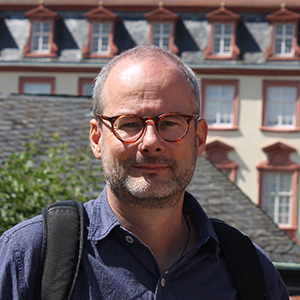Update 01/08/2018: Identification of mutations in dystroglycanopathy associated genes– publication from Prof. Straub and colleagues
What are the aims of the project?
Identifying the genetic mutation causing a muscular condition is an important step in understanding the underlying biology of a condition and developing treatments. There are a lot of different subtypes of LGMD, which are caused by mutations in many different genes and have very varied symptoms. Many people with LGMD do not have a genetic diagnosis and are currently without an effective treatment.
Professor Straub and his team have previously used next generation sequencing to study the DNA that codes for the proteins of people with genetically undiagnosed LGMD. 51 percent of people remained without a genetic diagnosis. The researchers think that these people have mutations in genes that are not currently associated with muscle wasting conditions.
In this project, Professor Straub and his team aim to identify new genetic changes that can lead to LGMD. The researchers will collect DNA samples from the unaffected parents of people who did not receive a genetic diagnosis. The DNA samples will be sequenced using next generation sequencing, a state of the art technique that quickly and accurately analyses multiple genes at one time. Experts in next generation sequencing at the Broad Institute of Harvard and MIT in the USA are working with Professor Straub and have covered the cost of the sequencing.
Professor Straub’s team will then compare the DNA sequence of the patients and their parents, in order to find the genetic change that causes LGMD. In this way the researchers could identify new genetic causes of LGMD. It is possible that this project will also inform us of new clinical symptoms associated with LGMD.
Why is this research important?
This project will identify new genes associated with LGMD. This will lead to a better understanding of the underlying causes of the condition. Furthermore, it will provide a starting point for future research to increase the knowledge of the underlying biological pathways leading to these types of LGMD and for the development of potential treatments.
How will the outcomes of this research benefit people with limb girdle muscular dystrophies?
The patients and families taking part in this project will receive a genetic diagnosis. This is important as it might allow for the more effective management of some symptoms and may allow people to seek appropriate counselling, for example in the case of family planning.
Importantly, diagnostic laboratories will be informed of the newly identified genetic changes that can lead to LGMD, therefore helping with the diagnosis of future patients. The results from this project could also identify new areas to be targeted for the development of new treatments.
How might this research impact on other neuromuscular conditions?
The use of next generation sequencing in this project could accelerate the pathway to getting this technique to be adopted into routine clinical testing, providing quicker and more accurate diagnostic tests.
Grant information
Project leader: Professor Volker Straub
Location: Newcastle University
Conditions: Limb girdle muscular dystrophy
Duration: One year, starting 2017
Total project cost: £29,974
Official title: Application of next-generation sequencing technologies to identify novel neuromuscular disease genes in patients with unexplained limb-girdle muscle weakness
Further information and links
Learn more about limb girdle muscular dystrophy
Read the latest research news for limb girdle muscular dystrophy

It is only through your contributions that we can continue to fund the vital work that takes us closer to finding treatments and cures for muscle disease. Donate now and help change the lives of thousands of people living with muscle disease.
